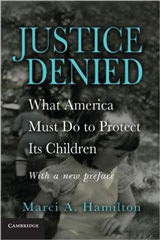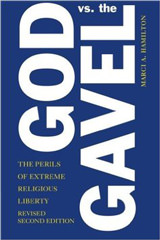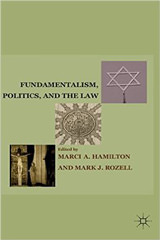While Pope Francis was visiting Philadelphia last month, the ten-year anniversary of the groundbreaking 2005 Grand Jury Report on Child Sex Abuse in the Philadelphia Archdiocese came and went. Let’s just say it wasn’t one of the topics on the Archdiocese’s agenda for the Pope. Nevertheless, it is important to assess what ten years have wrought as it was the most comprehensive report on clergy sex abuse in any jurisdiction in the United States. While it pales in comparison to the Australian Royal Commission’s report on abuse in multiple institutions across an entire country, it remains the benchmark for responsible prosecutorial initiative on clergy sex abuse in the United States.
There have been eight reports by prosecutors in the United States, and the 2005 Philadelphia Report is the one in my view to be duplicated in other jurisdictions. In the words of Terry McKiernan, president of the comprehensive online archive of the history of the Catholic Church’s sex abuse history, BishopAccountability.org: It “combined many different strong perspectives and modes of analysis. Anyone reading the report can get an education in how priests’ career histories, their abuse histories, and the management approach of the diocese could add up to a catastrophe for children. The report gets at the two crimes better than any other report—it provides detailed case studies of the abuse itself and the best analysis of how management made it all happen. Those case studies and the pattern studies are very unusual in the depth of their engagement and sympathy. The great article in NCR is a good reminder of where that empathy came from and how much it cost.”
Then-District Attorney Lynne Abraham remains the prosecutor who deserves the most credit in the United States for detailing the facts of abuse in a diocese. True, her successor, current District Attorney Seth Williams issued a stinging though much shorter report of his own in 2011, which led to the only conviction on child endangerment of any member of the hierarchy, Monsignor Lynn. But for the work of Abraham’s office, that conviction never would have happened. Full disclosure: I was honored to be selected by Abraham as an outside consultant on the 2005 Report.
Excellent Public Education About Child Sex Abuse in Institutions
The 400-plus page report described in painful detail what dozens of priests had done to children in the Archdiocese, and how the hierarchy covered it up. The now-familiar pattern of shuffling priests among parishes after there were reports of abuse is as clear as the callousness of the hierarchy. The catalog of abusing priests was eye opening to many Philadelphians, especially Philadelphia Catholics whose attendance and giving dropped perceptibly after the facts came out.
While few citizens likely read every single page, many reporters did, and it opened a new era in fact-based coverage of child sex abuse in the Philadelphia region. The impact is not limited to the Catholic issues: The education of the media and the public has paid off in more survivors empowered to come out of the shadows (whether from clergy sex abuse or some other setting), better public understanding of the dynamics of institution-based abuse, and a greater capacity for the people to grasp the failures at Penn State with serial abuser Jerry Sandusky.
It also set an example for other DA Offices to pursue cultures of abuse where children are at risk, e.g., the Bucks County DA’s Office’s current investigation into the serial abuse at the prep school, the Solebury School.
The 2005 Report concluded with a list of recommendations including elimination of the criminal statute of limitations and elimination or revival of expired civil SOLs.
The Archdiocese was not pleased. It issued a 69-page “rebuttal” defensively saying that the Report was “a vile, mean-spirited diatribe” that was “reminiscent of the days of rampant Know-Nothingism in the 1840s”—in other words, accusing Abraham of being anti-Catholic, which was utterly false, but this “it’s-all-about-me” attitude presaged its later scorched earth tactics against the victims in litigation and the legislature.
Mixed Justice for Child Sex Abuse Victims and Their Families
Despite the extensive investigation and a desire to bring the responsible parties to justice, the Report concluded that it was too late to prosecute a single priest or the hierarchy in large part due to Pennsylvania’s short criminal statute of limitations (age 30 at the time, even though data shows that victims need on average into their 40s). The Report thus issued a list of recommended legal reforms to ensure greater protection of children in the future, including extending or eliminating the criminal and civil SOLs.
The Pennsylvania legislature moved quickly to extend the criminal SOL for child sex abuse, up to age 50. Why? There is no pedophile lobby to block such a move, and the Philadelphia Archdiocese could hardly oppose prospective SOL reform given the 2002 Dallas Charter. The bishops had pledged to protect children so how could they oppose putting pedophiles in jail or admit that they expected more abuse in the future?
By 2005, it was clear that there were hundreds of victims and for the vast majority, the criminal SOL had expired. There is nothing anyone can do about that. Under Stogner v. California, the criminal SOL cannot be revived without violating the Ex Post Facto Clause, so prosecution was out of the question for decades of abuse—due to the Archdiocese’s cover up. That meant justice—if there is any to be had for many victims—must occur through the civil court system.
Roughly a handful of civil cases have made it through the age-30 Pennsylvania gauntlet, but many more have been relegated to the sidelines. Some like Frank Finnegan lost on the SOL in the courts but many others never filed.
The 2011 Grand Jury Report did result in a few criminal convictions in addition to Monsignor Lynn and a civil settlement. Philly victims, however, remain outside the justice system because of Pennsylvania legislators who dance to the beat of the bishops, as they straight-arm the victims.
Unconscionable Response of the Philadelphia Archdiocese
There has been no improvement in the deficient Pennsylvania civil SOL for child sex abuse despite the 2005 and 2011 Report revelations for one single reason: the investment of the Pennsylvania bishops in a campaign to ensure the victims don’t get to court. Rep. Mike McGeehan and now Reps. Mark Rozzi and Thomas Murt have led the way to reform, but the Catholic Conference each time has threatened and begged members to insulate them from the victims they created.
Most recently, the votes were there to get Murt’s bill out of committee, but while the Pope was visiting in Philadelphia, the Catholic lobbyists had nuns and priests call members over the weekend and beg them or shame them into protecting whatever their particular program was. They falsely claimed that sex abuse lawsuits would mean the end of Catholic charity, which has not been true anywhere, particularly because the local, state, and federal governments support Catholic Charities to the tune of 70-80 percent. Some issued veiled threats that voters would not vote for a member who chose justice for the victims over the bishops’ demands, even though polls have shown the opposite. Of course, no one mentioned that settlements are covered by the insurance for clergy abuse that the Archdiocese has had for decades.
The moral bankruptcy of the Archdiocese’s position goes without saying, but the gullibility and pandering of Pennsylvania’s politicians does defy common sense. The deepest irony is that state after state has moved forward on civil SOLs, often relying on the findings of the 2005 Philadelphia Report. We will know that the Report has fully served justice when that day comes in Pennsylvania.










“…..this “it’s-all-about-me” attitude presaged its later scorched earth
tactics against the victims in litigation and the legislature…..”
Ah, yes, the Christ-like managerial approach at the Archdiocese of Philadelphia that continues even under the current leadership of Archbishop Chaput.
Thank God he has the “Rocky” statue at the other end of the Benjamin Franklin Parkway from the archdiocesan headquarters. A permanent reminder that Philadelphia and Pennsylvania families will continue to fight to protect ALL children of the Commonwealth of PA as well as provide legal access and redress for those past victims horribly devastated by such criminal acts.
This is certainly worth reading and worth REMINDING…little unfortunately has changed. Until local authorities and State Law Makers develop the backbone to put a foot down and say “no more” will we look the other way, NO MORE will powerful institutions be paid such deference that these crimes can go on. As always Professor Hamilton articulates the challenges and injustice still standing in the way of victims of child sexual abuse (particularly by clergy). Until we Fix the Laws and insist on accountability and consequences for those institutions that protect predators, nothing will change. Please demand the elimination of the Statute of Limitations for sexual assault crimes committed against children.